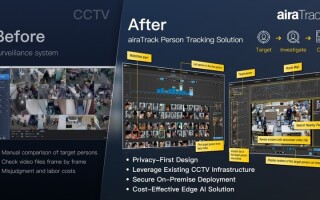Electric vehicle vision
February 01, 2014

In the rapidly expanding electric vehicle rollout, the future of embedded computing in this space will depend on how these heavily integrated systems...
In the rapidly expanding electric vehicle rollout, the future of embedded computing in this space will depend on how these heavily integrated systems find commonality across potentially various operating systems.
Few former skeptics of electric vehicles would now doubt the electric future of automobiles. The “greenness” of that electricity itself remains contentious, but the leap to more widely spread renewable energy conversion is surely a shorter leap than the combustion engine has taken to electric after more than a century of fossil-fuelled ignition.
How this future electric vision manifests itself is quickly becoming a corporate battleground. Competition dictates that innovation progresses rapidly, usually at the expense of standardization. To become truly mainstream, that uniformity must first be reached. Once the battle is won, early adopters tend to pay the price with suddenly obsolete hardware.
Interestingly, in this war the main battle will not be the electric vehicle technology itself – it will be the vital infrastructure that must be in place, with 24/7 reliability and seamless integration, to make the most significant migration the motor industry has ever seen a reality.
In a major boost to our own industry, naturally embedded computing will be found at the heart of all links in this vital chain.
Within the vehicle, the now ever-powerful local platform will intelligently control charging, battery conservation optimization, crash prevention, automatic parking – alongside every other de facto function of today’s motor vehicle. A quick boot-up time will surely be paramount here.
At the charging point, dispensed kilowatts will be billed to a cloud-based portal, displaying charging progress to owners from the comfort of their sofas, alongside any required maintenance – or Windows Updates!
Whilst locally possible, it is unlikely that complex fault diagnostics would be displayed to the layman driver, in case he attempts a potentially dangerous repair. At the maintenance point, mating embedded hardware will download, probably wirelessly, a vehicle’s reported service needs and re-inspect itself once they’re undertaken.
All of these links require exceptional reliability. You’ll have noted my earlier mention of Windows Update – Microsoft has already invested heavily in its collaborative effort, forging links with major car manufacturers to push its Operating System (OS) range throughout the chain. Microsoft’s recent Parisian car-sharing infrastructure deployment with Autolib is most impressive, but is the embedded market ready to reconsider Microsoft’s OS reliability?
A substantial part of what once was a Microsoft-dominated industry has since made the shift to alternatives, usually embedded Linux derivatives, or bespoke OSs such as QNX – typically citing the need for almost perfect reliability.
Now we come back to the standardization necessity: embedded computers have always been able to communicate across OSs, but can differing OSs offer the level of integration that this new chain demands?
That’s what Microsoft can offer: having ownership of the entire range, with derivatives targeted at each link, all designed from the bottom up to integrate seamlessly at every level. Embedded Linux, whilst revolutionary, with its many variants, may be too disjoined to meet the needs of this rapidly developing technology before Microsoft has gained such a stronghold that alternatives are prevented. Historically such monopolies have been quelled, but can the standardization needed to make this all work occur without it?
Perhaps we’ll see a new Linux flavor developed that meets this need for scalability and integration, though will its legally required open source nature be too big of a risk in itself – or will sufficient investments in embedded security be realized to negate this?
Maybe the anti-Microsoft feeling will be sufficiently strong that a breakaway, universal, and bespoke OS will be the winner; though I personally doubt this could happen anytime soon. Competition dictates that, whilst with hindsight such collaboration would negate millions of dollars of wastage, each competitor wants their lion’s share and will throw millions behind marketing their product – such as the cases of Betamax/VHS and HD-DVD/BluRay.
Whoever and whatever wins the standardization war, I am excited to be a part of it. What free market competition does offer, despite some wastage, is a succession of increasingly functional and efficient technology, and it’s to this we owe the standard of living we enjoy today.





